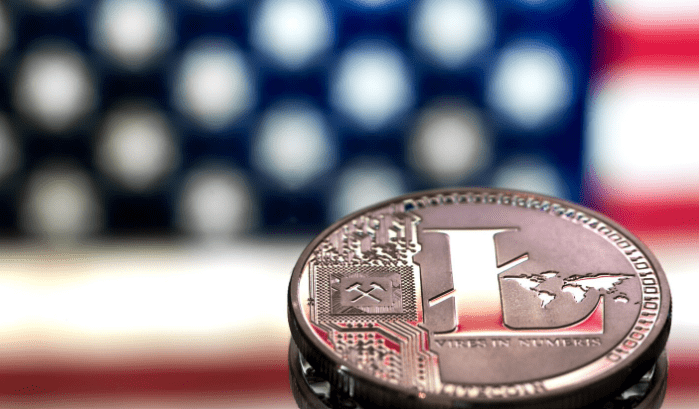The adoption of cryptocurrencies has placed digital money at the center of finance. Stablecoins are the ones to talk about among digital currencies as they have solved the issue of volatility that often accompanies the cryptocurrency market. Collateral-backed to the U. S. dollar or other assets, stablecoins try to keep their value constant, and this has made them very attractive to investors, traders, and companies wanting a digital economy with no fluctuations. However, the acceptance of stablecoin regulation US is growing as its usage is expanding. So, it is necessary for people who are going to invest in or transact with these digital currencies to know the U. S. regulatory framework regarding stablecoins.
What Are Stablecoins?
Fiat-backed stablecoins, like those tied to the US Dollar, provide price stability, making them ideal for daily transactions and market protection.
There are three primary categories of stablecoins:
- Fiat-collateralized stablecoins: They are the ones backed by the fiat reserves that are usually kept in banks. Among these are USDC and Tether (USDT).
- Crypto-collateralized stablecoins: They are backed by other cryptocurrencies, often over-collateralized to prevent losses from price fluctuations.
- Algorithmic stablecoins: They use no backing assets, relying instead on algorithms and smart contracts to maintain value.
As the stablecoin market continues to grow, US regulators are increasingly focusing on rules that not only protect consumers but also ensure financial stability and effectively enforce AML compliance.
The Current State of Stablecoin Regulation US
The stablecoin regulation US scene is intricate and ever-changing. Crypto assets, contrary to standard financial instruments, do not have unequivocal classifications and frequently perform in a decentralized manner over several jurisdictions. Consequently, a number of federal and state authorities are participating in the regulation of stablecoins by supervising and enforcing the regulations.
Key Regulatory Bodies
- The Securities and Exchange Commission (SEC): The SEC regulates securities, including certain stablecoins. If a stablecoin qualifies as a security, it must follow registration, disclosure, and investor protection rules.
- The Commodity Futures Trading Commission (CFTC): The CFTC is in charge of the commodities and derivatives markets. Thus, algorithmic coins, in some cases, or derivatives depending on the coins tied to them, may be regulated under CFTC jurisdiction, especially if they are utilized for futures or swaps.
- The Office of the Comptroller of the Currency (OCC): The OCC regulates banks and financial institutions, so U.S. banks issuing or holding stablecoins must meet its capital and liquidity requirements.
- The Financial Crimes Enforcement Network (FinCEN): FinCEN enforces AML and CTF rules, so stablecoin issuers and exchanges must meet reporting and monitoring requirements to prevent illicit activities.
State-Level Regulations
Several states are regulating stablecoins via money transmission laws. New York’s BitLicense requires crypto businesses to follow AML and consumer protection rules, while Wyoming offers crypto-friendly frameworks that encourage innovation with some regulatory oversight.

Why Stablecoin Regulation Matters
Stablecoin regulation in the U. S. is significant for many reasons:
- Consumer Protection: Investors can be assured about the proper handling of their money by the issuers due to regulatory oversight. This helps reduce the risk of fraudulent activities or mismanagement.
- Financial Stability: Regulations ensure that the downside risk of stablecoins being adopted on a large scale and causing market disruption is eliminated.
- Compliance and Legal Clarity: Everybody knows where they stand in terms of obligations thanks to the clear regulations. Moreover, the amount of legal uncertainty is greatly reduced.
- Innovation and Adoption: An environment of balanced regulation can facilitate innovation. It offers startup companies and even established ones a secure place for growing and developing their stablecoin solutions.
Difficulties in Stablecoin Regulation US
Regulators aim to protect markets and consumers, but US stablecoin regulation still faces many challenges.
- Classification Issues: Sometimes, it’s difficult to classify a stablecoin as a security, commodity, or payment instrument.
- Cross-Border Transactions: Since stablecoins are commonly used all over the world, it is hard to enforce U. S. regulations on the issuers who are outside of the country.
- Technological Complexity: Traditional regulations may fail to cover algorithmic stablecoins and DeFi integration.
- Market Growth vs. Oversight: Regulators have to synchronize the acts of encouraging innovation and mitigating risks. This allows regulations not to hinder technological developments.
Current Events
There is now more interest from the Biden Administration and Congress in the regulation of stablecoins. They wish to get both innovation and market stability as their achievements. Among the developments are:
- The President’s Working Group on Financial Markets (PWG) Report (2021): It urged Congress to pass a law requiring Federal Reserve banks to regulate stablecoins and ensure redemption rights.
- Legislation Proposal: The ‘Stablecoin TRUST Act’ and similar bills aim to enforce reserve requirements, transparency, and regulatory oversight on U.S. stablecoins.
- Federal Reserve’s Activity: The Fed is considering the possibility of launching its own digital currency (CBDC). Such a currency would likely be compatible with regulated stablecoins and would have an impact on their acceptance in the market.
Recommendations for Investors and Companies
https://boostofmind.com/Therefore, it is extremely important for U.S. investors and companies to carefully follow the best practices to successfully navigate the US stablecoin regulation:
- Research and Verify: Before you use or invest in a stablecoin, check who the issuer is, whether there is enough backing in the reserves, and if there are transparency reports available.
- Monitor Regulatory Changes: The rules at the federal and state levels can be changed quite often. Knowing what is happening keeps you in compliance and lowers your risk.
- Diversify Your Investments: Invest in various stablecoins and digital assets so that your exposure to one issuer does not become too great.
- Deal with Trustworthy Exchanges: Ensure trading platforms comply with regulations and maintain proper AML policies.
- Get Advice from Professionals: Consult lawyers and financial advisors, especially for large investments or business integration.
The Coming Decade for Stablecoin Regulation US
The future of stablecoin regulation US is promising yet complex, as lawmakers aim for transparent rules that foster innovation while ensuring protection. Here’s what to expect:
- More federal supervision of the issuers.
- Uniform requirements regarding the reserves and the transparency.
- More effective measures for consumer protection.
- Furthermore, collaboration with the CBDC frameworks can enhance integration and regulatory alignment.
Consequently, stablecoins will continue to grow in payments, trading, and DeFi, while US regulation will play a key role in shaping the market. As a result, investors, businesses, and developers will closely monitor updates to operate effectively.
Summary
Stablecoins combine crypto benefits with lower volatility, but understanding US stablecoin regulation is key. Investors and businesses can minimize risks and seize opportunities by staying informed, choosing credible projects, and following regulations.
By consistently staying in touch with legal and financial advisors, users can ensure compliance and fully benefit from stablecoins. Moreover, with strict regulation, US stablecoins could ultimately become a cornerstone of digital finance.


